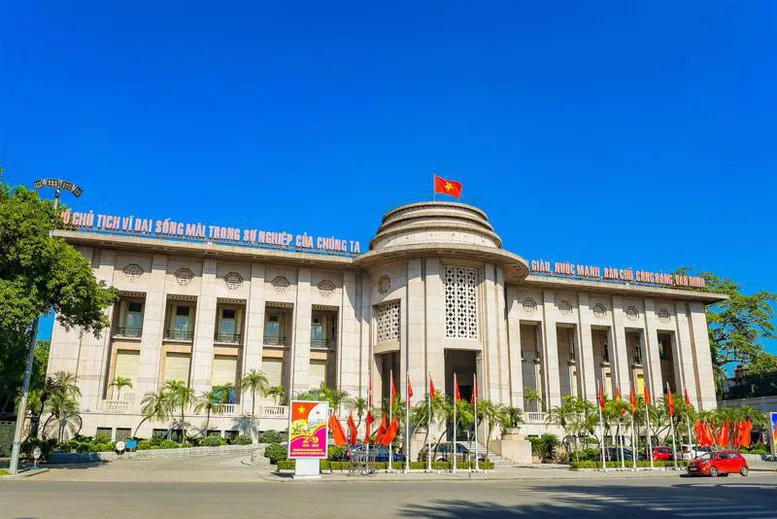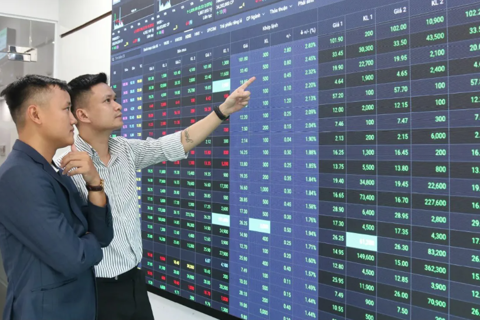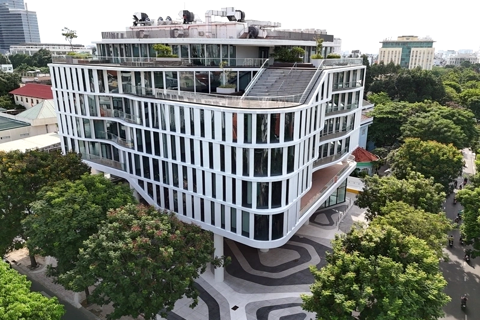Vietnam is not manipulating currency, the US says
The US acknowledged Vietnam’s ongoing efforts to modernize and increase transparency in its monetary and exchange rate policy frameworks.
THE HANOI TIMES — The US Department of the Treasury has once again concluded in its latest report that Vietnam is not manipulating its currency.

The State Bank of Vietnam. Source: SBV
The biannual report, titled 'Macroeconomic and Foreign Exchange Policies of Major Trading Partners of the United States', reviews and assesses the policies of the 20 major trading partners that, collectively, account for around 78% of US international trade over the four quarters ending in 2024.
The US Treasury evaluates potential currency manipulation based on three key criteria: a bilateral trade surplus with the United States of more than US$15 billion; a current account surplus exceeding 3% of GDP; and sustained, one-sided intervention in foreign exchange markets, measured by net foreign currency purchases by a country’s central bank over a 12-month period.
The report concludes that none of the major trading partners met all three criteria, nor did any of them intervene in the exchange rate in a way that would affect the balance of payments or gain an unfair competitive advantage in international trade.
However, if a country exceeds two of the three thresholds, it is placed on the Treasury's 'Monitoring List' and remains on the list for at least two subsequent reporting cycles.
In the latest report, Vietnam remains on the Monitoring List alongside China, Japan, South Korea, Taiwan (China), Singapore, Germany, Ireland, and Switzerland. All except Ireland and Switzerland were also included in the November 2024 report.
As the US’s largest export market in Southeast Asia, Vietnam has recorded a growing bilateral trade surplus over the past six years, primarily driven by exports of electronics and machinery.
In terms of the current account balance, which reflects the net value of exports and imports of goods and services, as well as income from labor and investments, Vietnam posted a surplus of 6.1% of GDP over the four quarters ending in December 2024.
Following disruptions to global trade caused by the 2021–2022 Covid-19 pandemic, Vietnam’s current account surplus grew significantly in 2023 and 2024.
The US Treasury reported that the State Bank of Vietnam (SBV) sold roughly US$9 billion in foreign currency in 2024, equivalent to 1.9% of the country's GDP. The move came amid downward pressure on the Vietnamese dong, driven by global and U.S. macroeconomic trends.
Since 2022, the SBV has shifted from its earlier strategy of one-sided foreign exchange accumulation (2016–2021) to measures aimed at supporting the dong's value. By the end of 2024, Vietnam’s foreign exchange reserves stood at US$81.2 billion.
In the Joint Leaders’ Statement on Elevating US-Vietnam Relations to a Comprehensive Strategic Partnership in September 2023, the US acknowledged Vietnam’s ongoing efforts to modernize and increase transparency in its monetary and exchange rate policy frameworks.
Based on the Comprehensive Strategic Partnership, the SBV has reaffirmed its commitment to collaborating with relevant ministries and agencies to maintain close cooperation and establish regular, effective communication channels with the US Treasury. These efforts aim to enhance mutual understanding, share information, and address issues of mutual concern in a timely manner.











